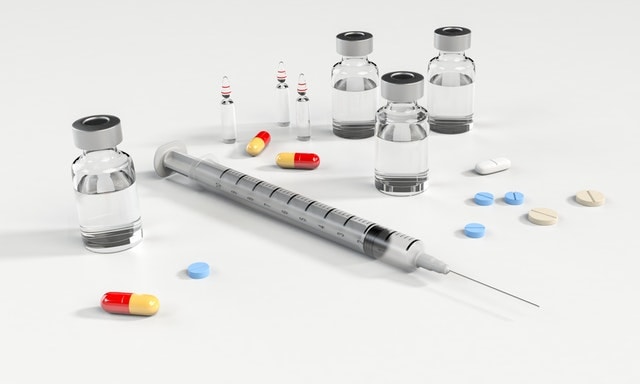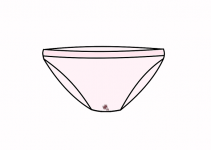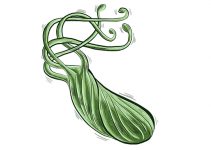 Menopur and Gonal-F are both gonadotropins. These are fertility drugs that contain luteinizing hormone (LH), follicle stimulation hormone (FSH), or a combination of both.
Menopur and Gonal-F are both gonadotropins. These are fertility drugs that contain luteinizing hormone (LH), follicle stimulation hormone (FSH), or a combination of both.
They are informally known as injectables because the chemical structure of FSH prevents them from working when taken orally.
Therefore, they can only be administered by injection, compared to Clomid and letrozole, which are pills taken orally.
How Do They Work?
Both menopur and gonal-f are generally used in women who do not ovulate in response to Clomid treatment or those who do not conceive after 4-6 Clomid treatment cycles.
These drugs can also be used to boost the fertility of women who can already ovulate by themselves and to trigger the production of multiple eggs for an IVF cycle.
Follicle Stimulating Hormone works by stimulating the eggs to grow and once given in higher doses overpowers any normal mechanisms in the body that can prevent the release of multiple eggs which can in turn result into multiple births.
Menopur is often used with or instead of gonal-f in women who have a polycystic ovarian syndrome (PCOS) or going through in vitro fertilization (IVF).
How Are They Produced?
Gonadotropins fall into two basic categories: urinary- extracted gonadotropins and recombinant gonadotropins.
Recombinant gonadotropins are created in a lab by incorporating recombinant DNA technology.
Gonal-F is a recombinant gonadotropin and it can either be used alone or combined with menopur to provide additional LH in specific cases
Urinary-extracted gonadotropins are derived and purified from postmenopausal women’s urine which tends to be high in FSH and contains both FSH and LH.
Urinary-extracted gonadotropins include human menopausal gonadotropins (hMG), highly purified FSH and purified FSH.
Menopur is an example of a highly purified hMG.
What Are Their Side Effects?
Both menopur and gonal-f have similar side effects including: nausea, pelvic pain or tenderness, vomiting, mild abdominal/stomach pain, bloating, breast tenderness/pain/swelling, headache, injection site reactions (irritation, bruising, redness, or pain), stuffy or runny nose, sore throat, acne, skin rash and numbness or tingly feeling.
Serious side effects that you may experience from these fertility injections include:
- Pale/cold/numb skin of the feet/legs/arms/hands
- Swelling of feet/hands/ankles
- Unusual bleeding from the uterus/vagina
- Swelling/ redness/pain in the calf muscles
What are the Probable Risks?
There are similar risks associated with both menopur and gonal-f. They include:
- Ovarian Hyperstimulation Syndrome (OHSS)
It’s a potentially serious complication that results from gonadotropin therapy. Mild OHSS happens in 10-20% of women taking either menopur or gonal-f, and serious OHSS is less prevalent occurring in 1% of the women.
Serious OHSS can be deadly if ignored or not properly treated. It’s essential that you are versant with the symptoms.
- A Multiple Pregnancy
Some studies have discovered that up to 30% of pregnancies conceived with either gonal-f or menopur are twins or more in comparison with the 1-2% of naturally conceived pregnancies.
Most multiple pregnancies with either menopur or gonal-f are twins, and up to 5% are either triplets or more. Multiple pregnancies, with the inclusion of twin pregnancies, are risky for both the mom and the babies.
Most treatment cycles are, therefore, carefully monitored to help prevent the chances of multiple pregnancies.
If the doctors notice really high estradiol levels or more than three follicles, most of them cancel the treatment. Some studies have managed to lower the rate of multiple pregnancies by up to 5%.
They’ve done this by beginning at a low dosage, using slow increments only when required and close monitoring.
- Risk Of Miscarriage and Ectopic Pregnancy
There are higher chances to experience an ectopic pregnancy or a miscarriage with the use of either gonal-f or menopur.
- Adnexal Torsion
Less than 1% of women using either menopur or gonal-f will experience ovarian twisting also known as adnexal torsion.
This is when an ovary twists on itself, therefore, cutting off its own blood supply. Surgery is required to either possibly remove or untwist the affected ovary.
- The Risk Of Pregnancy-related Complications
The risk of experiencing placental abruption and pregnancy-induced high blood pressure (HBP) may be slightly higher in comparison to a naturally conceived pregnancy.
It is unclear whether infertility or the fertility injections cause this.
What Are the Success Rates?
The potential for pregnancy success with menopur or gonal-f will depend on various factors including the infertility cause and age.
According to a study carried out by The Jones Institute for Reproductive Medicine in 2011, the overall pregnancy rate for women that use these fertility injections is 1%, and the live birth rate is about 7.7%.
Younger women have increased the birth rate, and if the cycle is canceled due to high estradiol levels and development of three or more dominant follicles, multiple pregnancy rates are kept at a low 2.6%.
However, there is a probability that the increased success rate came at the expense of an increased risk of multiple pregnancies and OHSS.
Menopur compared to gonal-f is well-tolerated, cost-effective, high quality and a more preferred treatment that is affiliated with a significantly higher on-going rate of pregnancy in IVF cycles in comparison with the pregnancy rate seen for women treated with gonal-f alone.
What is the Recommended Dosage per Cycle?
It is important to remember that the recommended dosing scheme for women undergoing IVF is individualized for each patient and it follows a stepwise approach.
The recommended initial dose for the first cycle of gonal-f is 75 International Units (IU). Doses, however, range up to 300 International Units per day depending on how a patient responds.
The recommended initial dose for the first cycle of menopur is 225 IU.
Menopur can also be administered together with bravelle, and the combined products should not exceed a total initial dose of 225 IU (150 IU of menopur and 75 IU of bravelle) or (75 IU of menopur and 150 IU of bravelle).
What are the Costs of Treatment?
Gonadotropin treatment costs range from $500 to $5,000.
The cost for Gonal F is higher compared to Menopur. The cost for one cycle depending on the retail price, the drug used and the amount prescribed ranges from $2000 and $ 5000 compared to Menopur which ranges from $500- $2000.
The higher price takes into account ultrasound monitoring and blood work and ultrasound the price also varies since different women will require a different amount of drugs.
Image: Pixabay



